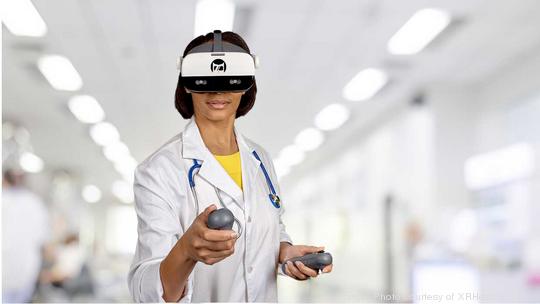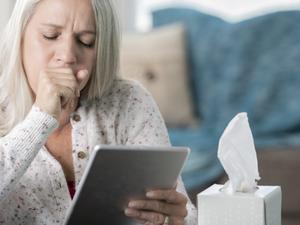
For former Israeli Air Force pilot Eran Orr, traditional outpatient care was not working.
Orr, founder and CEO of Brookline-based XRHealth, sought out an alternative to treat his whiplash, which one doctor told him would require surgery.
Orr decided to infuse virtual reality (VR) with outpatient treatment and began seeing results.
“I came up with the idea because I flew with helmet displays for 15 years, and I had a lot of simulators as an F16 pilot," Orr said. "For me, the combination was obvious."
Now, XRHealth is helping many patients with pain management and cognitive behavioral health. Four years ago, the company set out to be a VR medical application for physical therapy. Orr had developed the concept at the time after arriving to the area from his home country of Israel.
“My wife got an offer to come and do a postdoc here in Boston, and I knew no one would hire me here as an F16 pilot, so I had no choice but to establish a company,” Orr said.
Today, XRHealth employs over 75 people, more than 35 of whom are local. XRHealth's R&D operations are in Israel; its logistic centers are in Massachusetts. The startup was part of MassChallenge's first HealthTech cohort.
XR stands for extended reality, which incorporates virtual, augmented and mixed reality. At the moment, VR is the only form ready for primetime in the external reality market.
As Orr explained it, patients are assigned a clinician, then have a headset shipped to them. They then receive treatment remotely. The clinician controls the VR activity based on the condition the patient is working with.
“During that treatment, the clinician can control the virtual reality headset, see what the patient is seeing and basically utilize the virtualized environment to the patient's needs,” Orr said.
Orr said VR treatment can allow clinicians to measure things like response time, reaction time while tracking eye motion, impulses and memory span. After each session, the patient and clinician can analyze the data they see and determine if the treatment is working.
“Basically anything you can measure in an outpatient clinic we can do better, faster and in more a concise way,” Orr said.
The clinicians are working in what Orr calls “virtual reality treatment rooms” for each session.
For example, a clinician might send someone suffering from hot flashes into a cold environment via VR. For someone who needs exercise, a clinician could put two swords in their hands and have them pop balloons during a session.
“We design those [sessions] to be fun and engaging," Orr said. "Most of the time, the patient is playing a game, but what you're actually doing is doing the treatment."

Not being limited by brick and mortar has allowed XRHealth to expand, particularly during the coronavirus pandemic.
Weeks before the pandemic hit the U.S., Orr pivoted XRHealth. Rather than selling the startup as a physical therapy solution, he decided to open it up as a VR outpatient clinic.
In April, XRHealth launched VR telehealth support groups for people in coronavirus-induced isolation. Patients with similar ailments could support each other, and doctors affiliated with the XRHealth telehealth clinics could offer guidance as well.
“I think what the pandemic helped us [with] is to convince [others] there's a need or even necessity for those types of solutions in the market,” Orr said.
Just like any outpatient treatment, Orr said a virtually reality session is covered by most health plans. In fact, most of their patients he found are on Medicaid and tend to be 65 or older.
Although there is a huge emphasis on telehealth, Orr said XRHealth provides more than that. Orr wants to reimagine outpatient health entirely and eventually become the largest outpatient clinic in the U.S. The company has already partnered with an Australian health plan AARP and is treating patients worldwide.
“The entire outpatient realm today is lacking quantification," Orr said. "The only way to do a step function is to start putting numbers next to each and everything that we're doing in this market, and that's what we're trying to do."
Jordan Frias is a contributing writer for BostInno.






